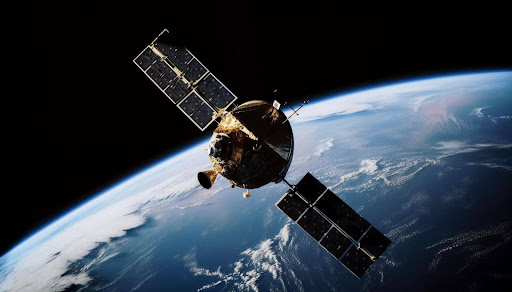As technology evolves the complexity of software developing these tools like drones is also incredibly driven. Most people know that drones operate with remote controllers, only few know the role of the software which is controlling that gadget, an operating software. So, does drone controller software actually need to have an OS? This question is important for manufacturers and those who want to use it with best performance.
If your quest is the same, then explore this article. Here we will cover the role of OS in drone software, when it’s essential, and how it affects different types of drones including long-range drones, remote control drones, and drones with thermal cameras.
Understanding Controller Software of Drones
Drone controller software is the brains behind the function of drones. It controls the device stability when you fly it. When you operate a drone that software manages the sensor’s data, and facilitates communication with the drone. Whether a drone flies independently or flies under remote control, this software controls each step of the drone.
However, you cannot operate all drones in the same way. Some work on simple firmware setups, while others require advanced software platforms supported by an operating system. So, what’s the difference, and why does it matter? Let’s see in details:
Significant Role of an Operating System in Drone Software
You know the operating system of your computer or smartphone controls the basic functions of the hardware. The OS of the device manages communication between different parts of the system, and its proper functioning.
Likewise, an operating system (OS) in a drone also acts as a bridge between the hardware (like motors, cameras, and sensors) and the software that controls them. In drones, this manages the connection of the flight controller, camera, GPS, and other onboard systems to ensure that everything is running smoothly.
OS Integration in Long-Range Drones
Long-range drones are made to manage complex operations. These drones are responsible for maintaining a stable connection to the remote control or autopilot system over vast distances. An operating system in these drones ensures that these handle the data demands of long flight times. These also ensure a high-resolution imagery without hiccups.
Let’s explain its functioning in an example: A long-range drone’s OS can integrate GPS tracking, telemetry data, and communication systems in a united system. This allows consistent and efficient performance, especially in critical operations.
Thermal Drones & OS Integration
Thermal drones, commonly used in search, security purposes, agriculture, or industrial inspections. These drones process real time images with thermal drone cameras. The drones have specialized thermal cameras that generate large amounts of data, which is required to support the software. In this type of technical tool, an OS is essential. It will process thermal images quickly, store them, and transmit them back to operators.
Can Drone Controller Software Work Without an OS?
Not all drones, but complex drones often require an integration of an OS for seamless performance. Let’s examine some drones without OS.
Remote Control Drones Without an OS
Some smaller ones, which you use for casual flying or photography, don’t need an operating system. Instead, they often use firmware. The firmware is a pre-programmed software that directly controls the drone’s functions.
These drones typically have onboard sensors and simpler flight requirements, therefore only firmware is sufficient to control the basic functions. It can control altitude, stabilization, and simple camera movements. Beside this these drones are affordable and easy to use for beginners.
Efficiency of Simple Firmware
- Firmware without an OS allows for a lighter and more efficient system.
- These drones can perform well in basic flying conditions, without the complexity of an operating system.
- These can be power-efficient, though it typically uses fewer resources.
Key Considerations for Drone Software Selection
When you decide on whether you require an OS for your drone or not, it’s crucial to consider the type of drone and the intent of usage. Here are some factors which you can consider:
Drone Type and Software Needs
Drones for Hobbies: If you are a basic user of drones, then a simple firmware system without an OS may be sufficient. These drones are typically used for short-range flights and basic video capture.
Professional Drones: If your purpose is to choose drones for commercial applications like survey, delivery, or industrial inspection. You need more advanced software in your drone. An OS enables drones required to handle these complex tasks.
OS Needs for Real-Time Data
When your drone has to process real-time data, like thermal image formation or sensor readings, then this should be with an advanced software. An operating system allows these drones to handle large volumes of data and make instant decisions during flight. For example, thermal drones carrying thermal cameras to detect heat signatures. This function requires a lot of power and fast data transfer for accurate results.
Cost and Efficiency
An OS comes with extra cost and complexity, therefore it’s not needed for simpler drones. If your concern is not related to complexity tasks and your budget is congested, you can opt for firmware without an OS. However, if you want long-range or thermal imaging drones with the benefits of an OS, it will be costly.
Why Some Drones May Not Need an OS
Though drone software is becoming complex day by day, there are still drones that can perform efficiently without an OS. Why may they not need an OS? Let’s answer it:
- The drones which are used in short-range applications like indoor flying or light photography, OS-free software is enough. These drones don’t need advanced features or long battery life, because firmware can do everything required.
- For budget-conscious users, the non-OS systems work best . It’s also possible for those who need a simple drone for basic functions. These drones typically come lightweight and have fewer sensors. Only firmware can word efficiently for them.
Advantages of Using an OS in Drones
In the advanced drones, the operating system comes as an addition and provides several benefits that enhance performance and functionality.
Resource Management in Long-Range Drones
Long-range drones often require careful resource management to ensure smooth operation during long flights. When an OS manages the power consumption, communication, and real-time processing of data, it ensures an optimal performance.
Real-Time Data Processing
The drones with complex systems like LIDAR sensors, need real-time data processing to operate effectively. In those drones, then an OS ensures these tasks are handled swiftly. It helps the drone to process and transmit information quickly.
Scalability and Updates
By using OS in drones, you can scale and update the system according to need. This is the foremost advantage of OS consisting drones. For example, when a new software feature comes into the market, the operating system of drones is updated to integrate these new features.
Conclusion
So, does drone controller software need to have an OS? The answer depends on the type of drone and its intended use. For simple, short-range drones, firmware without an OS is often sufficient. However, for advanced drones, especially long-range drones or thermal drones an operating system provides the stability, scalability, and data processing capabilities required for optimal performance.
By choosing the right software setup, you can ensure that your drone operates efficiently and meets the specific needs of your mission.





